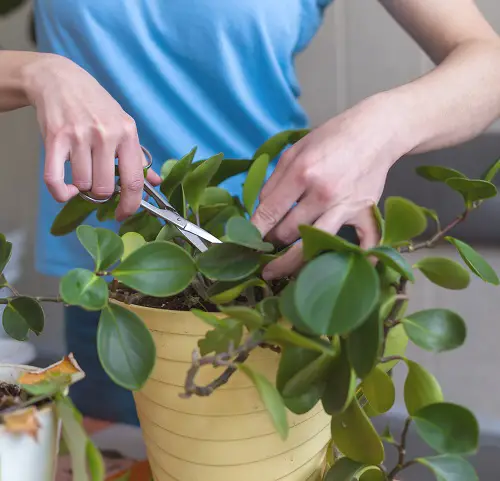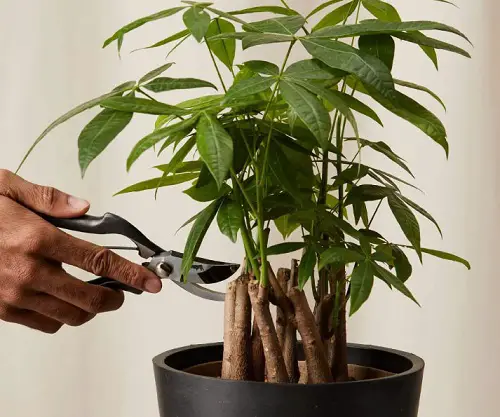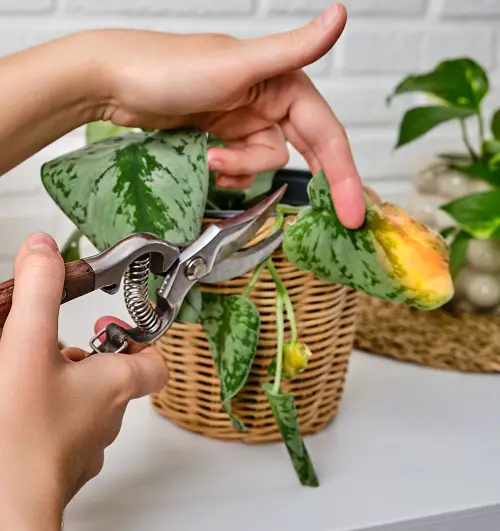A little haircut goes a long way in keeping your plants lively and good-looking. In this article, we show you How to Prune Houseplants.
A little trim and tuck is all your houseplants need to look their best indoors. While they don’t need as much pruning as the ones in your garden, some shaping and tidying will make them bushier and prettier, instantly uplifting your home’s decor. Lucky for you, we know everything about giving plants haircuts!
Why Prune Houseplants?
Just like trimming out split ends for healthier hair, pruning helps houseplants thrive and live longer. Apart from giving it a makeover, removing leggy growth, spent flowers, and damaged leaves helps the plant redirect its energy toward sprouting fresh shoots and foliage, keeping it renewed and luscious.
Pruning also helps deter fungal infections, diseases, and pests by clearing out overcrowded pathogen-prone bits and allowing air to pass freely through the foliage. Then, pests and micro-organisms will no longer have a warm, hidden breeding ground to plot and attack your plant!
Pruning Tools You’ll Need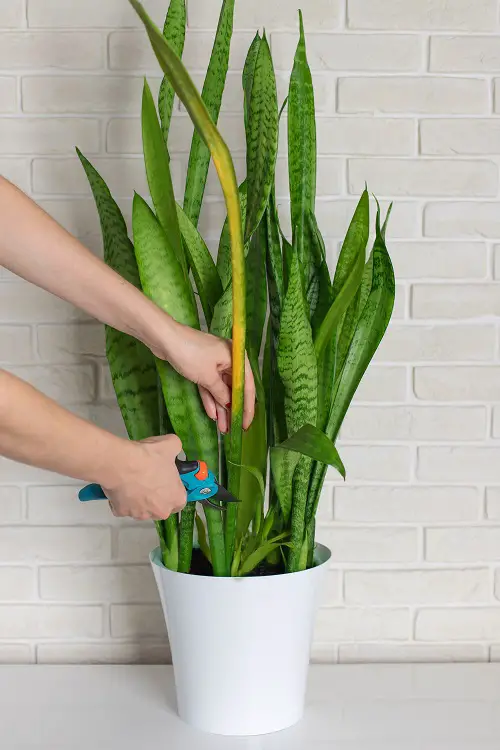
You’re not starting an army! For your sweet little houseplants, you’ll mainly need a sharp pair of bypass pruners to allow swift, clean cuts across various-sized stems.
Now, if you want to indulge your garden shopping impulses, sharp hand pruners and sterilized sewing scissors will also come in handy for delicate trims and petite houseplants. Throw in a clean cloth or disinfectant wipes to sanitize your tools and you’re good to go. Let’s now take a look at how to prune houseplants.
How to Prune Houseplants
1. Thinning
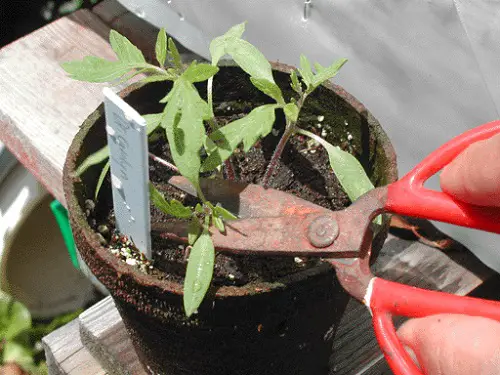
Thinning is like shedding winter clothing in sultry weather. Remove excess branches and stems so both air and light may reach various parts of the plant, allowing it to breathe freely. Target congested areas or outliers that detract from the overall shape.
In thinning, you could remove entire branches or simply cut back overgrown bits. Decide according to the plant’s state.
2. Deadheading and Removing Leaves
Deadheading spent flowers signals the plant to refocus its energy on producing new growth and, possibly, more flowers. Snip the flower stalk just above a leaf node or bud, where fresh shoots may sprout.
However, not all flowers need deadheading. In this case, focus on removing excess foliage. Over time, lower leaves may turn yellow, brown, or even wilt or turn mushy. These leaves are now a burden on the plant’s resources, so trim them out.
And remember not to use your hands to pull off the leaves. Instead, use all the tools you bought to cut it neatly at the base.
3. Cutting Back Leggy Growth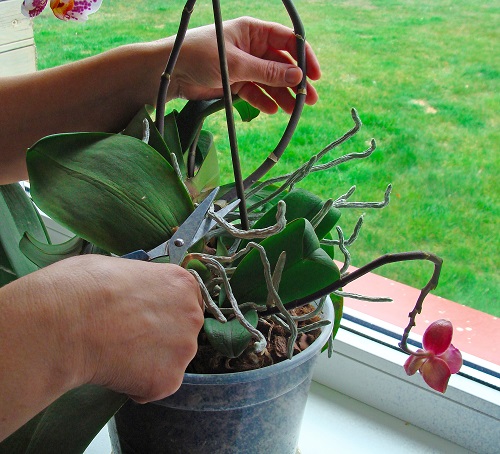
Some houseplants may develop long, straggly stems as they stretch out in search of food, water, and light. You need to cut back these overgrown stems to control the size and appearance.
Grab sharp, clean pruners and make clean, angled cuts just above a node, removing no more than a third of the plant’s stems at once.
4. Pinching
You’ll have to get your hands dirty with this one! Using your thumb and forefinger, gently grasp and remove the tip of fresh growth just above a visible leaf node. This coaxes the plant to branch out and produce new leaves from its lower leaf nodes.
Pinching is especially useful for herbs like basil and ornamentals like coleus. Here’s a list of plants that benefit from pinching.
5. Shaping
Shaping allows you to train your houseplant to grow in a specific direction or form. Pruning shears become your sculpting tool here. Identify specific stems or branches that need pruning. Either remove them completely or cut them back further than some others.
And remember to start slow and make small cuts. You can always remove more later, but you can’t put them back!
6. Promoting Lateral Growth
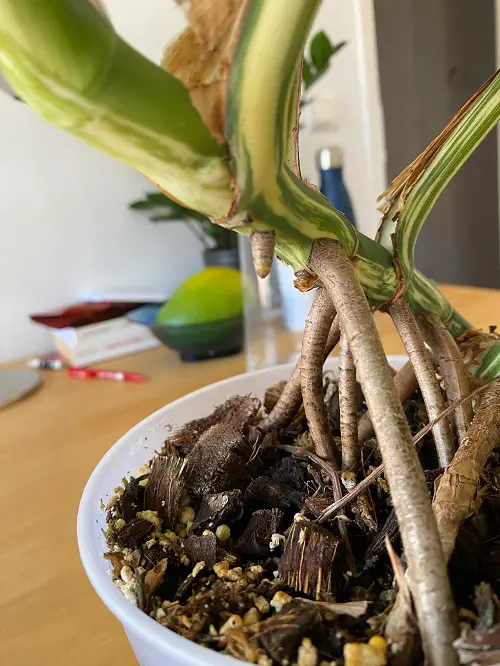
Plants like ficus and rubber plants naturally tend to grow upwards, reaching for sunlight. While this single, tall stem might be desirable for some, many prefer a bushier, fuller plant with more girth.
Cut off the top portion of a plant–its dominant growing tip. This disrupts the plant’s natural flow of auxins, which are hormones that promote longer stems. The horizontal-growing buds sense this hormonal shift and begin to develop into new branches.
7. Revival Pruning
When a houseplant becomes straggly, bare, or unruly, neglect or improper care is often the culprit. In these cases, revival pruning is your best bet to bring the plant back to life. Often, this involves removing more than a third of its growth, leaving just a few essentials that help it start over.
With less foliage to support, the plant has more energy to pop healthy new shoots from existing nodes. This also helps the plant fill out bare bits and grow fuller.
When to Prune Houseplants
Now that we know how to prune houseplants, the only thing left is knowing when to do it.
Most houseplants actively grow during spring and summer, and this is the best time to prune. In this phase, they have energy reserves to heal from cuts and can quickly produce new growth. Longer daylight hours in these seasons also provide ample light for the plant to recover and thrive.
But there are some exceptions. Pruning flowering houseplants after their blooming season allows them to channel their energy into overall growth instead of producing flowers. And some that naturally grow throughout the year, like certain ferns, can be pruned lightly at any time.
Pruning isn’t just about making your houseplants look pretty–it’s about keeping them healthy and promoting new growth. You can give your leafy friends a fresh start with a few simple techniques! Do let us know how it went for you in the comments!


